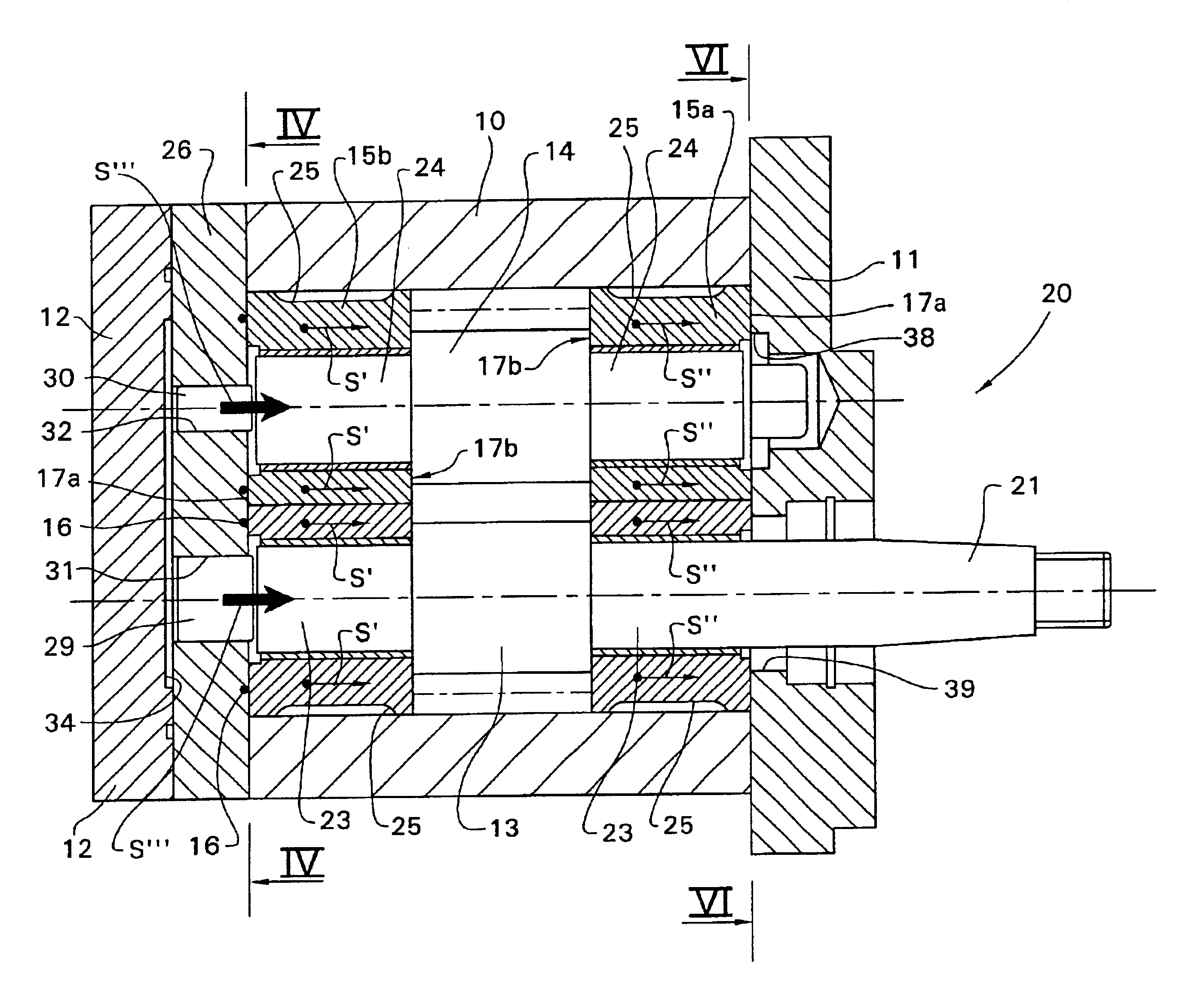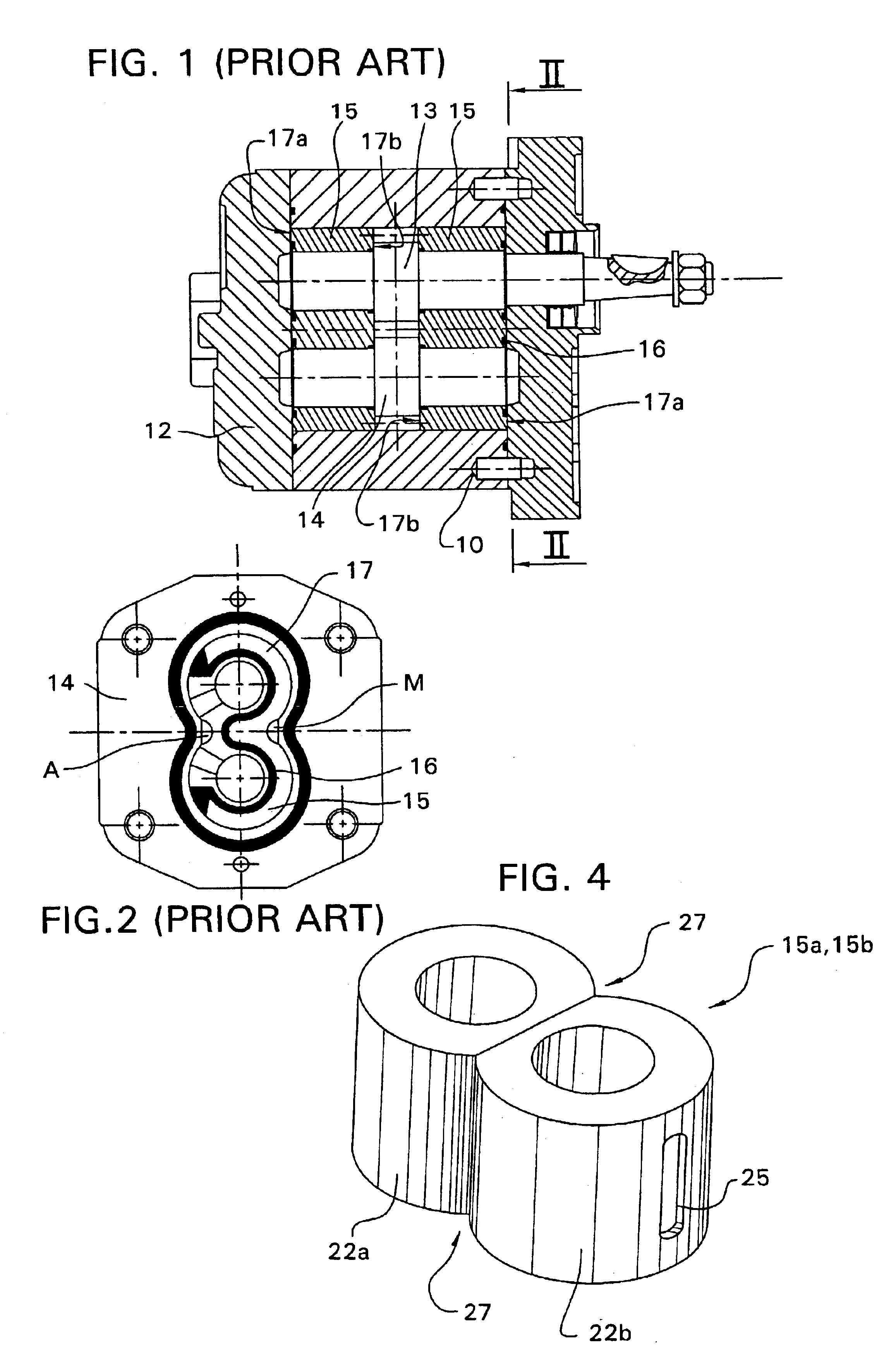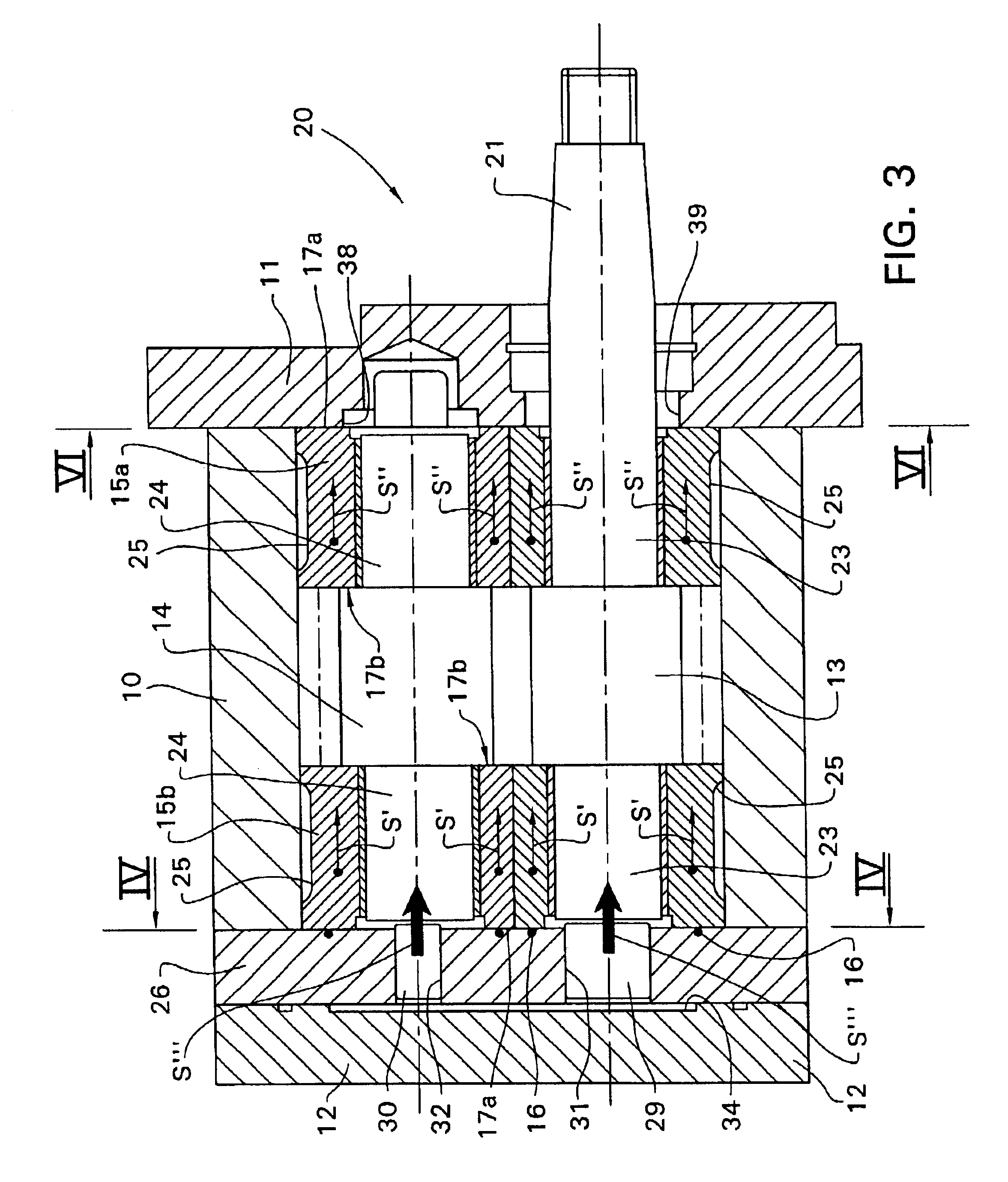Positive-displacement rotary pump
a rotary pump and displacement technology, applied in the direction of rotary or oscillating piston engines, intermeshing engagement engines, rotary piston engines, etc., can solve the problems of noise of the pump itself, noise of the operation, and rapid decline of the efficiency of the pump of this typ
- Summary
- Abstract
- Description
- Claims
- Application Information
AI Technical Summary
Benefits of technology
Problems solved by technology
Method used
Image
Examples
Embodiment Construction
[0019]Now with reference to FIG. 3, a gear pump 20 comprises, as already described above with reference to the known pump in FIGS. 1 and 2, a shell 10 having an output opening and an intake opening for a fluid, inside which are housed the driving gear 13 and the driven gear 14. In the example in the Figure, the gears 13 and 14 are of the cylindrical type having helical teeth, but naturally the invention can also be used with different gears, for example, a pair of straight spur gears, similar to that in the prior art illustrated in FIG. 1.
[0020]The shell 10 is closed at the two ends by the front cover 11 and the rear cover 12. The end 21 of the shaft 23 of the driving gear 13 protrudes from the front cover 11. For ease of illustration, the seals between the shaft 23 and the front cover 11 have been omitted in FIG. 3. Inside the shell 10, the shafts 23 and 24 of the gears 13 and 14, respectively, are supported by two bushing sets, a front bushing set 15a and rear bushing set 15b. Eac...
PUM
 Login to View More
Login to View More Abstract
Description
Claims
Application Information
 Login to View More
Login to View More - R&D
- Intellectual Property
- Life Sciences
- Materials
- Tech Scout
- Unparalleled Data Quality
- Higher Quality Content
- 60% Fewer Hallucinations
Browse by: Latest US Patents, China's latest patents, Technical Efficacy Thesaurus, Application Domain, Technology Topic, Popular Technical Reports.
© 2025 PatSnap. All rights reserved.Legal|Privacy policy|Modern Slavery Act Transparency Statement|Sitemap|About US| Contact US: help@patsnap.com



